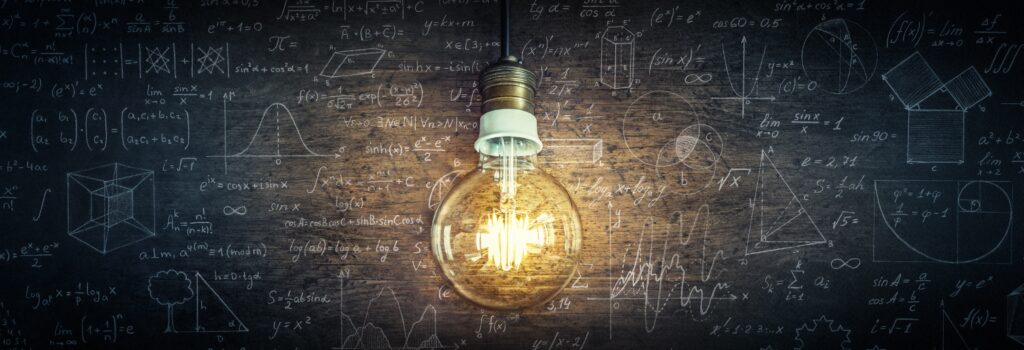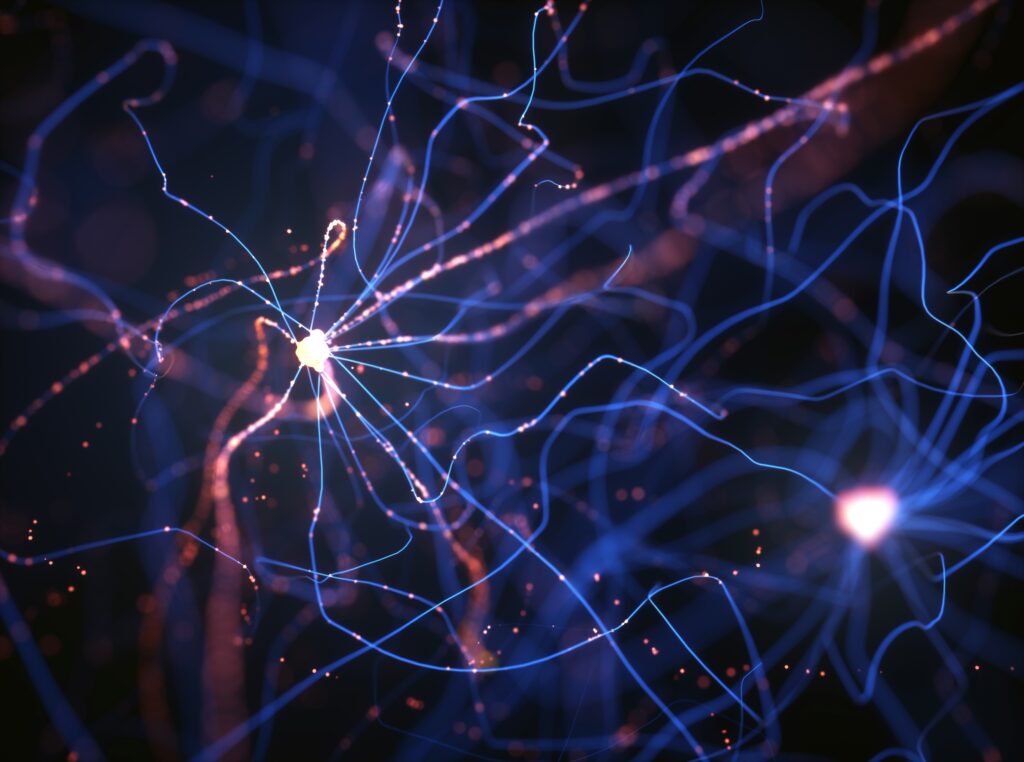Whirlpools in Universal Consciousness
Reading | Metaphysics
![]() Nithin Nagaraj, PhD | 2022-01-09
Nithin Nagaraj, PhD | 2022-01-09

Dr. Nagaraj reminds us of the extraordinarily rich and long history of metaphysical Idealism in Indian philosophy, and of the power of metaphors to illustrate, to the common person, the simultaneously profound and simple truths of Idealism.
A picture is worth a thousand words. A good metaphor is worth a thousand ideas. Conveying complex metaphysical ideas to the layperson is a daunting task. This is where good metaphors can serve not just as an efficient pedagogical tool to drive the point home, but also to help us remember and recount. In elucidating the idealist worldview, Bernardo Kastrup1 employs a very handy metaphor: the image of whirlpools in the river of universal consciousness. In this metaphor, Universal Consciousness is imagined to be akin to a singular flowing river with ripples, curls, undulations and whirlpools. Dissociated alters (like you, me and other life forms) are like swirling whirlpools in this roaring river of Universal Consciousness.
As part of their teachings, ancient (and modern) Indian philosophers, sages and thinkers have skillfully devised metaphors borrowing from artifacts or examples encountered in daily living that were familiar to the lay public. The ‘rope and snake,’ the ‘pot and clay,’ ‘gold and golden ornaments’,’ the ‘ocean and its waves,’ the ‘theatre stage and the lamp’—these are but a tiny fraction of the large number of clever metaphors used by Indian philosopher-sages of yore to convey complex metaphysical arguments in very simple terms. Spiritual teachers, both ancient and contemporary ones, use several metaphors to expound the philosophy of ‘Not-Two’ (Advaita or non-dualism).
For example, the ‘gold and golden ornaments’ metaphor is used to account for the changing appearance of all manifestations (necklaces, bangles, rings) superimposed on a changeless background (gold). This dualism (gold vs. golden ornaments) is ultimately unreal, the only reality being non-dual, gold, which is the substance of all ornaments. Similarly, individual body-minds (akin to golden ornaments) are made from the one substance that is real: Universal Consciousness (akin to gold).
The metaphor of the illusory appearance of a puddle of water (a mirage) in a desert is equally efficacious to convey the same non-dual truth. More recently, the sage of Arunachala, Ramana Maharishi, employed the screen and movie metaphor2 to teach the same non-dual truth as he experienced it. In this metaphor, Universal Consciousness stands for the screen on which the movie of manifestations (the phenomenal world) appears and disappears.
The Whirlpool Metaphor
A whirlpool has no real independent existence apart from the river of which it is a part of. It is impossible to physically remove a whirlpool out of the river. Every whirlpool is nothing other than a ‘name’ given to a temporary modulation of the ‘form’ of the one undivided river. In a similar vein, each body-mind is a temporary modulation of Universal Consciousness with a name attached to it (‘Bernardo’, ‘Clara’, ‘Ravi’ etc.). Two whirlpools are seemingly separate and distinct with their own individual features, their own personal points-of-view. Yet, as part of the same indivisible river, they are essentially one. Similarly, individual body-minds with distinct personalities and points-of-view are essentially one, as a part of the singular Universal Consciousness.
In reality, however, there are no parts in Universal Consciousness. Talk of ‘parts’ is simply a case of appearances and has no real validity. How is this possible? The dream metaphor makes this quite clear. The one indivisible waking mind, as it falls asleep, projects within itself a dream of diverse dream characters, dream mountains, dream clouds, dream pain, dream hunger, dream joy and a multitude of other dream objects, all of which disappear into thin air upon waking up. This apparent division of our indivisible minds is something that each of us experiences every night.
The whirlpool metaphor has special features that make it suitable for Idealist metaphysics. A whirlpool is formed by special laws of hydrodynamics and has a center that remains stationary to the dynamic flow of water around it. The whirlpool also has a boundary that localizes the water molecules and creates the illusion of a stand-alone entity, seemingly separate and independent from the river in which it is embedded.
In fact, however, the whirlpool is neither separate nor independent from the river, but only appears so to the observer (or to other whirlpools, if they could perceive). It is made up of only water and nothing else. This boundary of the whirlpool that circumscribes a localized circular flow of water is also a temporary and illusory one.
In the same fashion, we can hypothesize the existence of universal laws that bring about dissociation in Universal Consciousness. This process of dissociation results in individual body-minds (whirlpools) that have a seemingly stand-alone existence separate from Universal Consciousness (river). Each of us has thoughts, feelings and bodily sensations that are completely private and personal (just like the water going round and round inside a whirlpool). We share some of our sensory perceptions with our neighboring body-minds (which is what creates the illusion of a physical world outside us), but each of us has their own point-of-view, habits, idiosyncrasies, preferences, likes and dislikes, dreams, hopes, ambitions, desires, fears, as well as their our own ideology and belief systems. We have a rich inner life. Yet, we can’t really separate ourselves from the Universe we live in.
Even in a materialist ontology, an individual body-mind can never be really separated from the Cosmos. We breath the outside air continuously, we are thermodynamically and quantum-mechanically coupled with the environment (with which we exchange heat and particles continuously). We even share ideas, hopes and dreams with others. We are deeply interlinked and interconnected even under a materialist worldview. We are not an isolated system unto ourselves.
However, the idealist metaphysical framework is more parsimonious in explaining the facts of reality than materialism. Relatively speaking, in the whirlpool metaphor, the circular and spiral patterns of different whirlpools happen in the same river without the need to posit a different substance. Both the river and the whirlpool have the same substance (water) as their essence, as their underlying reality. Similarly, under Idealism, dissociated body-minds and Universal Consciousness are both made of the same substance (mentality) without the need to posit a spurious second substance called ‘matter,’ for which we have no direct evidence.
Swami Vivekananda, the cyclonic Hindu monk from India who created quite a ripple in the West starting from his groundbreaking 1893 speech at the World’s Parliament of Religions, in fact used the whirlpool metaphor to good effect. In his lectures on Raja Yoga3, where he expounds on the mysteries of Prana, he says:
In this universe there is one continuous substance on every plane of existence. Physically this universe is one: there is no difference between the sun and you. … Each form represents, as it were, one whirlpool in the infinite ocean of matter, of which not one is constant. Just as in a rushing stream there may be millions of whirlpools, the water in each of which is different every moment, turning round and round for a few seconds, and then passing out, replaced by a fresh quantity, so the whole universe is one constantly changing mass of matter, in which all forms of existence are so many whirlpools. A mass of maker enters into one whirlpool, say a human body, stays there for a period, becomes changed, and goes out into another, say an animal body this time, from which again after a few years, it enters into another whirlpool, called a lump of mineral. …when the action of Prana is most subtle, this very ether, in the finer state of vibration, will represent the mind and there it will be still one unbroken mass. If you can simply get to that subtle vibration, you will see and feel that the whole universe is composed of subtle vibrations. Sometimes certain drugs have the power to take us, while as yet in the senses, to that condition. Many of you may remember the celebrated experiment of Sir Humphrey Davy, when the laughing gas overpowered him—how, during the lecture, he remained motionless, stupefied and after that, he said that the whole universe was made up of ideas. For, the time being, as it were, the gross vibrations had ceased, and only the subtle vibrations which he called ideas, were present to him. He could only see the subtle vibrations round him; everything had become thought; the whole universe was an ocean of thought, he and everyone else had become little thought whirlpools. (emphasis added)
In his speech in San Francisco, titled “The Science of Breathing” (29 March 1900),4 he proclaims:
… The whole universe is a tremendous case of unity in variety. There is only one mass of mind. Different [states] of that mind have different names. [They are] different little whirlpools in this ocean of mind. We are universal and individual at the same time. Thus is the play going on … In reality this unity is never broken. [Matter, mind, spirit are all one.] (emphasis added)
He further adds:
All these are but various names. There is but one fact in the universe, and we look at it from various standpoints. The same [fact] looked at from one standpoint becomes matter. The same one from another standpoint becomes mind. There are not two things. (emphasis added)
The above passages are enough to convince us that the worldview espoused by Swami Vivekananda is virtually identical to Analytical Idealism and the whirlpool metaphor does a fantastic job in conveying the same. He not only introduced Hinduism and Vedanta to the United States but was also a champion of religious tolerance and called for an end to all forms of fanaticism. This could be directly attributed to his firm adherence to the philosophy of Advaita or Non-dualism, both in theory and practice.
What makes a good metaphor?
One can ponder on what constitutes a good metaphor. There are several features that it should contain. The metaphor must employ objects, things, events, phenomena that are very ordinary and familiar, which are encountered often in one’s daily life. Furthermore, the relationship between the elements of the metaphor must be a matter of common knowledge. This makes the metaphor relatable to a large number of people (adults and even children beyond a certain age and basic education). The simplicity of the metaphor is equally important. The obviousness of the truth of the metaphor typically makes any further explanation redundant and unnecessary. All that a teacher does over and beyond the metaphor is to provide the connecting link from the elements in the metaphor to elements of reality that she desires to convey. A good metaphor in philosophical discussions is one that, upon deep reflection, succeeds in catapulting the mind into silence, into the ground of our shared Being. The whirlpool metaphor does precisely that; it delivers us the experience of Swami Vivekananda’s words: “we are universal and individual at the same time.”
References
- Kastrup, Bernardo. Why materialism is baloney: How true skeptics know there is no death and fathom answers to life, the universe, and everything. John Hunt Publishing, 2014.
- Maharshi, Ramana. Talks with Sri Ramana Maharshi (compiled by Munagala S. Venkataramiah). Talk No. 199 and 453. Sri Ramanasramam, Tiruvannamalai, 2006.
- Vivekananda, Swami. The Complete Works of Swami Vivekananda-Volume 1. Raja Yoga. Chapter III. Prana. Advaita Ashrama (A publication branch of Ramakrishna Math, Belur Math), 1963. URL:https://en.wikisource.org/wiki/The_Complete_Works_of_Swami_Vivekananda/Volume_1/Raja-Yoga/Prana
- Vivekananda, Swami. The Complete Works of Swami Vivekananda-Volume 1. Lectures and Discourses. “Breathing”. Advaita Ashrama (A publication branch of Ramakrishna Math, Belur Math), 1963.

Essentia Foundation communicates, in an accessible but rigorous manner, the latest results in science and philosophy that point to the mental nature of reality. We are committed to strict, academic-level curation of the material we publish.
Recently published
Reading
Essays
Seeing
Videos
Let us build the future of our culture together
Essentia Foundation is a registered non-profit committed to making its content as accessible as possible. Therefore, we depend on contributions from people like you to continue to do our work. There are many ways to contribute.















